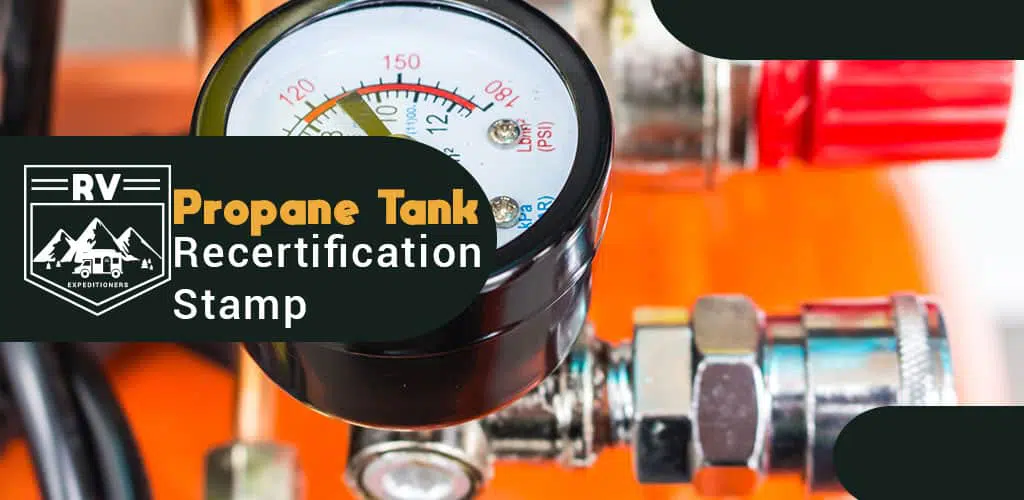As propane tanks age many of their components break down. This makes them unsafe for refilling. Therefore, propane tanks need periodic inspections. When a professional inspects a propane tank, they can issue a recertification stamp which declares the container safe.
Some propane tanks can last for decades when properly taken care of. Having your tank inspected when needed helps ensure your continued safe use of it. All propane tanks in the United States require inspection within 12 years of their manufacture date.
Propane Tank Inspection Types
Recertification stamps come in two varieties. When the service technician administering the inspection uses the internal hydrostatic method, they make the tank with an “E.” This stamp lasts for seven years.
If the technician performs an external inspection, they mark the tank with an “S.” This recertification stamp retains its validity for five years.
Despite inspecting listings, a propane tank may not function properly if not adequately maintained. Dented tanks or tanks with loose valves may cause safety concerns.
How to Determine a Propane Tanks Recertification Date
Along with noting the inspection type, technicians also apply the date of inspection. Each year gets broken down into four quarters, marked A through D. They apply this quarter label and the last two digits of the year by the new stamp. So if a technician performs an internal inspection in December of 2020, the stamp will read “S D20.” The “D20” indicates that the inspection occurred during the last quarter of the year 2020.
The date of manufacture should be listed by the handle of the tank. It includes the month and year in that order. So a tank manufactured in June 2018 will read 06-18.
How to Tell if Propane Tank Needs Recertification
Propane tanks require inspection every five, seven or 12 years. Tanks inspected with the external method, and therefore marked with an “E,” need inspecting every five years. The internal method, marked with an “S” lasts seven years. All tanks are good for 12 years from the date of their manufacture.
Check the date of your inspection and its type so that you know when it need another inspection.
What to Do When Propane Tank Expires
Once the manufacturing or inspection date expires, you may either check have it inspected again or purchase a new tank. Inspections may cost between $30 and $60. Some propane providers offer tank inspections when you get them filled up, such as AmeriGas. Others still will offer to swap your old tank for a new one for absolutely no fee. Ask your propane provider for more information, and carefully read all potential contract information.
What you decide to do with your expired tank depends on your circumstances. Sometimes it makes more sense to exchange the old tank for a new one instead of paying for an inspection. On the other hand, you may encounter a service provider willing to perform an inspection for free.
Consult your propane provider for more information.
How Long is Propane Tank Recertification Good For?
An external inspection marked “E” lasts for five years.. Internally inspected propane tank recertification lasts for seven years. At this point, your tank needs another inspection or you cannot get it filled.
The initial manufacturer inspection lasts for 12 years in the United States, and 10 years in Canada.
What do the Markings on a Propane Tank Mean?
There are usually several markings on a propane tank. The markings at the handle indicate the manufacturer, date of manufacture, model number and/or place of manufacture.
Other markings indicate the weight and capacity of the tank. The marking “TW,” meaning “Tare Weight,” followed by a number indicates the weight of the empty cylinder in pounds. So a tanked marked “TW 20” means the empty tank weights 20 pounds.
Capacity is indicated by the marking “WC” which means water capacity. The number accompanying this marker indicates its water storage capacity in pounds. This means a tank marked “WC 47.6” can hold 47.6 pounds of water.
At the propane filling station, the technician uses a conversion chart to determine how much propane a tank can hold.
Conclusion
In addition to inspection expirations, refilling stations may refuse service for a plethora of reasons. Reasons for denial include notable damage to a propane tank including dents or excessive rust. All filling stations perform a series of checks on each tank for safety purposes. They will examine the structural integrity of the tank and check that all of its components function properly.
While propane tanks can safely last for decades, they require proper care to do so. Keep your propane tank in a safe spot away from danger. Always handle the cylinder in the proper way, careful not to damage the valve.
Examine your propane tank periodically so that you can stay ahead of any damage or inspection expirations. So when you need to fire up the grill, you can do so with confidence that your propane tank will last for years to come.

